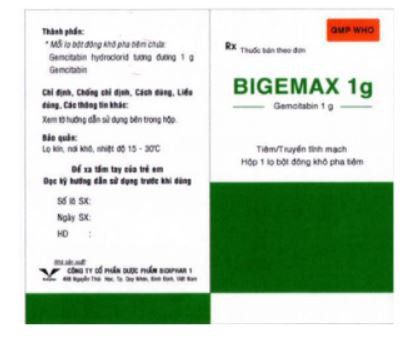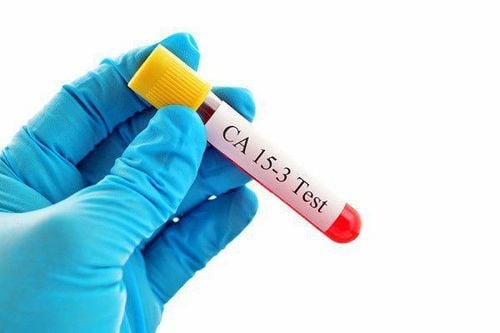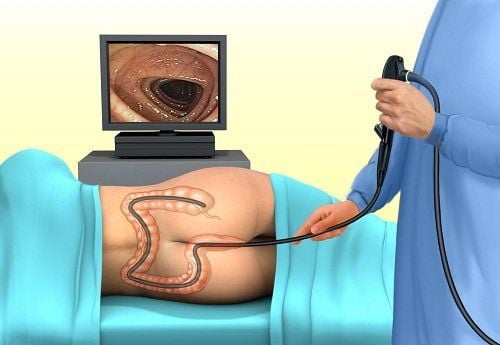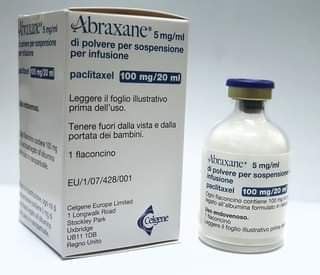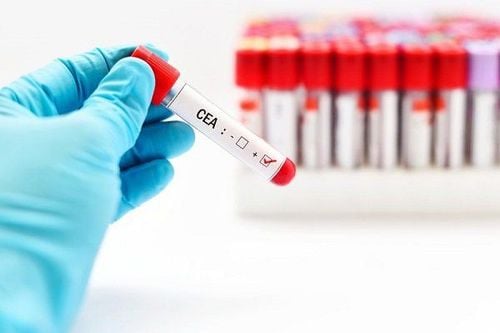This is an automatically translated article.
CA 19-9 is a tumor marker used in the diagnosis, assessment of patient response to treatment, and monitoring of patients with pancreatic or hepatobiliary cancer. In the diagnosis of pancreatic cancer, the presence of symptoms of pancreatic or biliary obstruction and elevated CA 19-9 will help the physician conclude the risk of pancreatic cancer rather than a benign pancreatic tumor. Similarly, patients with symptoms of ascites, jaundice, and elevated CA19-9 test results are at increased risk for liver cancer.1. What is a normal CA 19-9 count?
The normal quantitative CA 19-9 in plasma or serum is ≤ 37 U/mL. Normal values for CA 19-9 may vary slightly depending on the assay method, analyzer system, and the kits used by each laboratory.
2. CA 19-9 in pancreatic cancer risk diagnosis
CA 19-9 is a cancer marker with 79-81% sensitivity and 82-90% specificity for the diagnosis of pancreatic cancer in patients with suspected symptoms. With a cutoff value of 37 U/mL, the diagnostic sensitivity of pancreatic cancer was 81% (68% - 93%), specificity was 90% (76% - 100%). However, when the CA 19-9 level increased to greater than 1000 U/mL, the sensitivity for the diagnosis of pancreatic cancer was 41% (68% - 93%), the specificity was 99.8%.
Trắc nghiệm: Bạn biết gì về các yếu tố nguy cơ, chẩn đoán và điều trị ung thư tuyến tụy?
Ung thư tuyến tụy phổ biến thứ 10 trong những bệnh ung thư mới và là nguyên nhân thứ 4 gây tử vong do ung thư ở nam, nữ. Bài trắc nghiệm này sẽ kiểm tra kiến thức của bạn về các yếu tố nguy cơ, chẩn đoán và cách điều trị ung thư tuyến tụy.
Bài viết tham khảo nguồn: medicalnewstoday 2019
3. CA 19-9 in the assessment of pancreatic cancer status
The increased rate of CA 19-9 is related to the location of the tumor with the threshold >37 U/mL, the tumor is located in the head of the pancreas, the increase rate of CA 19-9 is 80%, when the tumor is In the body and tail of the pancreas, the increased rate of CA 19-9 was 57%.
The rate of increase of CA 19-9 index is correlated with disease stage with threshold >120 U/mL: when pancreatic cancer is at T2/3 stage, the rate of CA 19-9 increase is 33%, in In the T + N1 stage, the CA 19-9 growth rate is 71%, in the TN + M1 stage, the CA 19-9 growth rate is 85%.
The increase rate of CA 19-9 is also correlated with tumor size with a threshold of 37 U/mL: when the tumor size is <3 cm, the rate of CA 19-9 increase is 57%, when the tumor size If the tumor is 3-6 cm, the rate of CA 19-9 increase is 80%, when the tumor size is > 6 cm, the rate of CA 19-9 increase is 100%.
When CA 19-9 level is high >1000 U/mL, the diagnostic value of pancreatic cancer is positive and specificity is about 100% and surgical resection is no longer possible.
4. CA 19.9 in monitoring treatment response and prognosis of pancreatic cancer
The decrease in plasma CA 19-9 index after pancreatic surgery shows the response to treatment and is proportional to the patient's survival time. In contrast, the increased level of CA 19-9 plasma index after pancreatic surgery will be proportional to the likelihood of recurrence and inversely proportional to the patient's survival time.
5. CA 19.9 test results in the assessment of pancreatic cancer recurrence
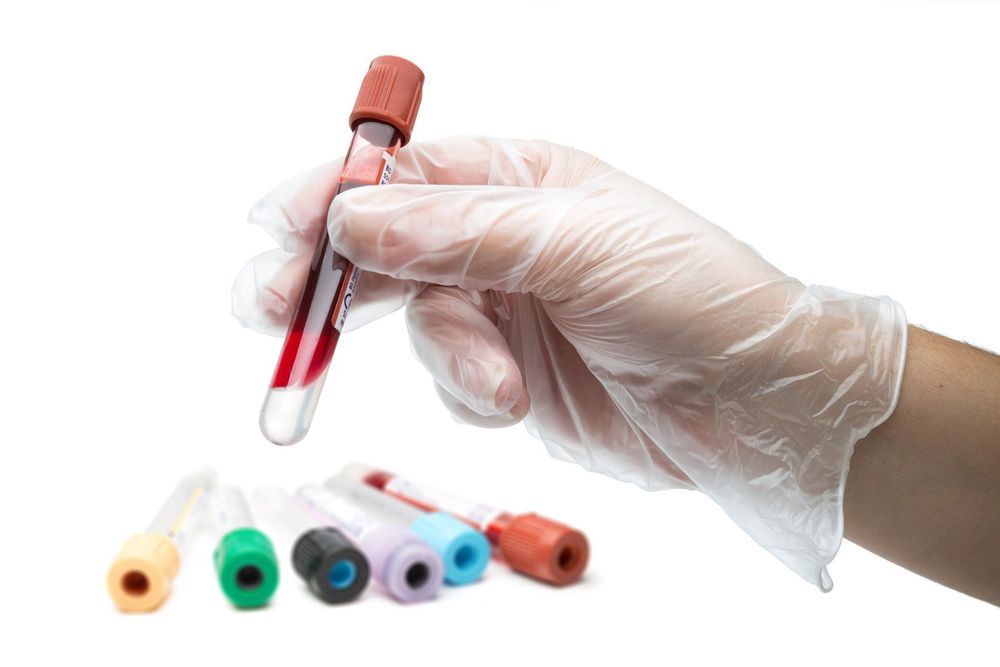
Preoperative plasma CA 19-9 level at normal level (<37 U/mL), patients have a median survival time of 32 - 36 months, longer than patients with CA 19- 9 (>37 U/mL) has a median survival of only 12-15 months.
After surgical resection or chemotherapy, plasma CA 19-9 level returns to normal or decreases 20-50% from baseline, the patient's survival time will be longer than CA 19-9 levels cannot return to normal or rise.
6. Quantitative index of CA 19-9 in some other cancers
The level of plasma CA 19-9 may be increased in some other cancers such as: liver, bile, stomach, colorectal, ovarian, esophageal...
6.1. CA 19-9 index in hepatocellular carcinoma (HCC) The clinical sensitivity of CA 19-9 index in hepatocellular carcinoma is 22 - 49%.
6.2. CA 19-9 index in cholangiocarcinoma The sensitivity of CA 19-9 with a threshold >100 U/mL in the diagnosis of cholangiocarcinoma is 53%. To differentiate between benign and malignant biliary obstruction, a CA 19-9 threshold of 200 U/mL (with 65% sensitivity and 91% specificity) should be preferred over a threshold of 37 U/mL (with sensitivity of 91%). 83% and specificity 45%). The combination of a CA 19-9 threshold > 200 U/mL with a CEA threshold > 5 ng/mL best differentiates hepatocellular carcinoma (HCC) from primary sclerosing cholangitis with or without cancer. honey.
6.3. CA 19-9 index in gastric cancer The clinical sensitivity of CA 19-9 index in gastric cancer is 26-60% and depends on the cancer stage. The combination of both CA 19-9 and the CEA marker doubles the clinical sensitivity, and is also a prognostic factor to help assess the extent of invasion, liver metastasis, peritoneal metastasis, and stage of cancer.
6.4. CA 19-9 index in colorectal cancer In colorectal cancer, the sensitivity of CA 19-9 (18-58%) is lower than the sensitivity of CEA marker (38-58%). . The increased rate of CA 19-9 in colorectal cancer depends on the stage of the cancer (Stage Dukes A is 0-7%, Dukes B is 17%, Dukes C is 47% and Dukes D is 75%). . Meanwhile, the rate of increase of CEA index in stages of colorectal cancer is much higher (Ducks A stage is < 20%, Dukes B is 40-60%, Dukes C is 60-80%, and Dukes C is 60-80%, Dukes D is 80-85%).
6.5. For the rest of the cancers, the sensitivity of CA 19-9 in the diagnosis of some other cancers is generally low: for lung cancer the sensitivity is 7-42%, for breast cancer it is 10%, Ovarian cancer is 15-38% (mucus is 68-88%, non-mucinous is 25-29%) and for uterine cancer is only 13%.

7. CA 19-9 index in some benign diseases
Increased levels of plasma CA 19-9 can also be increased in some benign diseases such as: biliary obstruction, cholangitis, enteritis, acute or chronic pancreatitis, cirrhosis, cystic fibrosis, thyroid disease . Approximately 10-30% of cases have transient CA 19-9 elevations, depending on disease activity and severity. This increase is usually <100 U/mL, maximum is about 500 U/mL, or is mildly persistent, requiring monitoring for at least about 2 weeks.
SEE ALSO:
Learn about cancer markers CA 72-4 Meaning of CEA quantification for cancer markers What are tumor markers?




